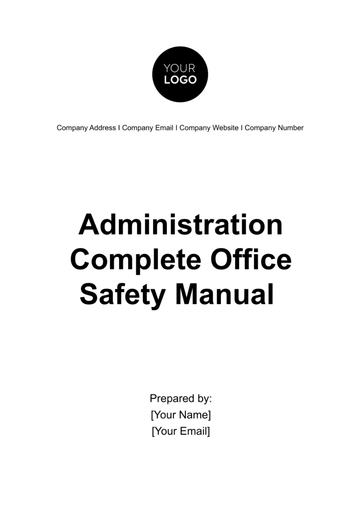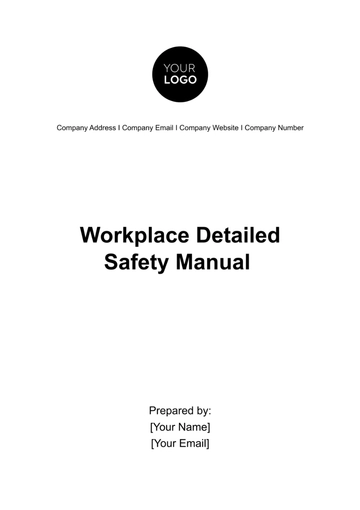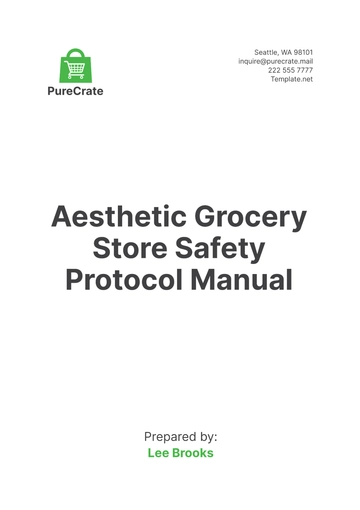Free Nursing Home Emergency Equipment Training Manual

I. Introduction
Purpose of the Manual
The Nursing Home Emergency Equipment Training Manual serves as a comprehensive reference tool designed to equip nursing home staff with the necessary knowledge and skills to effectively respond to various emergency situations. By providing detailed guidance on the proper use, maintenance, and protocols associated with emergency equipment, the manual aims to enhance the safety and well-being of residents in our facility. It serves as a foundational resource for staff training and ensures consistency in emergency response procedures across all departments.
Importance of Emergency Equipment Training
Effective emergency equipment training is crucial for nursing home staff to confidently and competently respond to emergencies, minimizing potential harm to residents and ensuring timely assistance. Through proper training, staff members become familiar with emergency protocols, equipment operation, and regulatory requirements, enabling them to act swiftly and decisively in high-stress situations. Additionally, ongoing training and reinforcement of skills contribute to staff readiness and preparedness for a wide range of emergency scenarios.
Overview of Emergency Scenarios in Nursing Homes
Nursing homes may encounter various emergency situations, ranging from medical emergencies like cardiac arrests and respiratory distress to environmental emergencies such as fires, severe weather, and natural disasters. Each scenario presents unique challenges and requires a tailored response strategy to ensure resident safety. By understanding and preparing for these potential emergencies, nursing home staff can mitigate risks and effectively manage crisis situations.
II. Regulatory Framework
Overview of Regulatory Requirements
Our nursing home operates within a regulatory framework established by agencies such as the Centers for Medicare & Medicaid Services (CMS) and the Occupational Safety and Health Administration (OSHA). These regulations set forth standards for emergency preparedness, equipment maintenance, and staff training to safeguard resident well-being and ensure compliance with federal and state laws. It is imperative that nursing home staff familiarize themselves with these requirements and uphold the highest standards of care and safety.
Compliance Responsibilities of Nursing Home Staff
All staff members are responsible for adhering to regulatory requirements pertaining to emergency equipment usage, maintenance, and training. This includes staying up-to-date on relevant guidelines, participating in training programs, and following established protocols during emergency situations. Compliance with regulatory standards not only ensures the quality of care provided to residents but also minimizes liability risks for the nursing home and its staff members.
III. Emergency Equipment Inventory
Comprehensive List of Emergency Equipment
Our facility maintains a comprehensive inventory of emergency equipment to support timely and effective response to various emergencies. This includes medical devices such as automated external defibrillators (AEDs), oxygen tanks, suction devices, and wheelchairs, as well as first aid kits and emergency supplies. By ensuring the availability of necessary equipment, we can enhance our ability to provide immediate assistance and improve resident outcomes during emergencies.
Description of Each Piece of Equipment
Each piece of emergency equipment is described in detail, including its purpose, functionality, and recommended usage guidelines. Staff members are trained to identify and operate each piece of equipment safely and efficiently, ensuring that residents receive the appropriate level of care during emergencies. Additionally, information on equipment maintenance, storage requirements, and expiration dates is provided to maintain equipment readiness and compliance with regulatory standards.
Location and Accessibility of Equipment
Emergency equipment is strategically located throughout the facility in easily accessible areas to facilitate rapid deployment during emergencies. Maps indicating the location of each piece of equipment are prominently displayed in key areas to assist staff members in locating resources quickly. Regular inspections are conducted to ensure that equipment is properly stored, labeled, and maintained according to established protocols.
IV. Staff Roles and Responsibilities
Designation of Emergency Response Teams
Our facility designates specific emergency response teams tasked with coordinating and managing response efforts during emergencies. These teams are comprised of trained staff members who assume roles such as team leader, medical responder, communications coordinator, and evacuation coordinator. By assigning clear responsibilities to each team member, we can streamline communication and decision-making processes to ensure an effective response.
Roles of Nursing Staff, Administration, and Other Personnel
All staff members have designated roles and responsibilities during emergency situations, which are outlined in detail to ensure clarity and accountability. Nursing staff are responsible for providing direct care to residents, assessing their condition, and implementing appropriate interventions as needed. Administration personnel play a crucial role in coordinating resources, communicating with external agencies, and ensuring compliance with regulatory requirements. Additionally, support staff members contribute to the overall response effort by assisting with evacuation, transportation, and other essential tasks as directed.
Communication Protocols During Emergencies
Effective communication is essential for coordinating response efforts and disseminating critical information during emergencies. Our facility has established clear communication protocols, including the use of emergency codes, two-way radios, and designated communication channels. Staff members are trained to communicate effectively under stressful conditions, relay important updates to relevant stakeholders, and escalate issues as necessary to ensure a coordinated response.
V. Emergency Procedures
Cardiac Arrest Response
In the event of a cardiac arrest, prompt initiation of cardiopulmonary resuscitation (CPR) and early defibrillation with an automated external defibrillator (AED) are crucial for improving outcomes. Staff members are trained to recognize the signs of cardiac arrest, activate the emergency response team, and initiate CPR and AED use as appropriate. Continuous monitoring of the patient's condition and coordination with emergency medical services (EMS) are integral parts of the response protocol to ensure timely advanced care.
Respiratory Distress Management
Respiratory distress can occur due to various underlying medical conditions and requires immediate intervention to maintain adequate oxygenation and ventilation. Staff members are trained to assess respiratory distress, administer supplemental oxygen as indicated, and clear airway obstructions using suction devices if necessary. Close monitoring of vital signs and collaboration with healthcare providers facilitate timely adjustments to treatment and escalation of care as needed.
Fall Response and Injury Prevention
Falls are common occurrences in nursing homes and can result in serious injuries, including fractures and head trauma. Staff members are trained to respond quickly to falls, assess residents for injuries, and provide appropriate assistance with mobility and transfers. Implementation of fall prevention strategies, such as regular assessment of fall risks, environmental modifications, and resident education, plays a key role in reducing the incidence of falls and promoting resident safety.
Fire Safety Procedures
Fire safety procedures are designed to minimize the risk of fire-related injuries and property damage and ensure the safe evacuation of residents in the event of a fire. Staff members are trained to respond swiftly to fire alarms, initiate evacuation procedures, and extinguish small fires using portable fire extinguishers if safe to do so. Regular fire drills are conducted to familiarize staff with evacuation routes, test the functionality of fire alarm systems, and reinforce proper fire safety protocols.
Severe Weather and Natural Disaster Response
Severe weather events, such as hurricanes, tornadoes, or floods, pose unique challenges to nursing home facilities and require comprehensive emergency preparedness measures. Staff members are trained to monitor weather forecasts, implement shelter-in-place or evacuation procedures as necessary, and ensure the safety and well-being of residents. Collaboration with local emergency management agencies and healthcare partners facilitates coordination of response efforts and access to additional resources during natural disasters.
VI. Equipment Usage Guidelines
Proper Handling and Operation of Defibrillators
Staff members are trained on the proper placement of AED pads, the sequence of steps for using AEDs, and the importance of maintaining a clear and safe environment during defibrillation. Regular checks are performed to ensure that AEDs are functional and properly maintained, including verifying battery life and electrode pad expiration dates. Staff members are also trained to recognize when to use an AED and to promptly activate emergency medical services (EMS) for advanced care.
Safe Use of Oxygen Tanks and Suction Devices
Staff members receive training on safely handling and administering oxygen therapy to residents, including proper setup and adjustment of oxygen flow rates. Suction devices are used to clear airway obstructions safely and effectively, with staff members trained to assess the need for suctioning and to perform the procedure according to established protocols. Regular checks are conducted to ensure that oxygen tanks are securely stored, properly labeled, and equipped with functioning regulators and gauges.
Wheelchair and Evacuation Chair Operation
Staff members are trained on proper wheelchair and evacuation chair operation, including techniques for safely maneuvering residents through doorways, hallways, and stairwells. Training includes instruction on properly securing residents in wheelchairs and evacuation chairs and ensuring their comfort and safety during transport. Regular maintenance checks are performed to ensure that wheelchairs and evacuation chairs are in good working condition, with any issues promptly addressed to maintain readiness for emergency use.
Other Medical Devices: Usage and Maintenance
Staff members receive training on the proper usage and maintenance of other medical devices commonly used in the nursing home setting, such as nebulizers, blood pressure monitors, and glucometers. Training covers device setup, calibration, and troubleshooting procedures, as well as infection control measures to prevent cross-contamination. Regular calibration and maintenance checks are performed to ensure the accuracy and reliability of medical devices, with any deficiencies promptly addressed to maintain patient safety and regulatory compliance.
VII. Training and Education
Initial Training Requirements for New Staff
All new staff members undergo comprehensive training on emergency procedures, equipment usage, and regulatory requirements as part of their orientation process. Training sessions are conducted by qualified instructors and include both theoretical instruction and hands-on practice to ensure proficiency in critical skills. New staff members are also provided with access to the Nursing Home Emergency Equipment Training Manual and other educational resources to support ongoing learning.
Ongoing Training and Continuing Education Programs
To maintain competency and readiness, staff members participate in regular training sessions and continuing education programs focused on emergency preparedness and response. Training sessions are tailored to address specific areas of improvement identified through drills, audits, and incident reviews. Staff members are encouraged to actively engage in learning opportunities and to seek feedback to continually enhance their knowledge and skills.
Documentation of Training Sessions and Staff Competency
Records of staff training sessions, including attendance, topics covered, and competency assessments, are documented and maintained for regulatory compliance purposes. Staff members are required to demonstrate proficiency in emergency procedures and equipment usage through written exams, skills assessments, and simulation-based scenarios. Training records are reviewed periodically to ensure compliance with training requirements and to identify opportunities for additional education and skill development.
VIII. Equipment Maintenance and Inspection
Regular Inspection Schedule for Emergency Equipment
A routine inspection schedule is established to ensure that all emergency equipment is in optimal working condition. This includes regular checks of AEDs, oxygen tanks, suction devices, and other medical equipment to verify functionality, expiration dates, and proper storage. Maintenance logs are maintained to track inspection dates, findings, and any corrective actions taken to address equipment issues.
Cleaning and Sterilization Procedures
Proper cleaning and sterilization procedures are followed to maintain the cleanliness and hygiene of emergency equipment. Staff members are trained on appropriate cleaning techniques and use of disinfectants to minimize the risk of infection transmission. Equipment surfaces are regularly wiped down and sanitized, with particular attention given to high-touch areas and components that come into contact with residents.
Reporting and Addressing Equipment Malfunctions
Staff members are instructed to report any equipment malfunctions or deficiencies immediately to the appropriate personnel. A designated maintenance team is responsible for promptly addressing reported issues and performing necessary repairs or replacements. In cases where equipment cannot be repaired onsite, arrangements are made to obtain replacement equipment to ensure continued readiness for emergency response.
IX. Evacuation Procedures
Evacuation Routes and Assembly Points
Evacuation routes and assembly points are clearly marked throughout the facility to guide residents and staff to safety during emergencies. Staff members are trained to lead residents to designated evacuation areas using the shortest and safest routes possible. Regular drills are conducted to familiarize residents and staff with evacuation procedures and to identify areas for improvement.
Assistance for Residents with Mobility Issues
Special considerations are made to assist residents with mobility issues during evacuations. Staff members are trained to prioritize residents with mobility impairments and to provide appropriate assistance, such as using evacuation chairs or providing physical support for walking. Evacuation plans are tailored to accommodate residents' individual needs and preferences to ensure their safety and comfort during the evacuation process.
Coordination with Emergency Services and External Agencies
Effective coordination with external emergency services and agencies is essential for ensuring a timely and coordinated response during evacuations. Nursing home staff maintain communication with local emergency management officials, fire departments, and other relevant agencies to coordinate evacuation efforts and access additional resources as needed. Mutual aid agreements may be established with neighboring facilities to provide support and assistance during large-scale evacuations.
X. Drill and Exercise Protocols
Scheduling and Conducting Emergency Drills
Regular emergency drills are scheduled and conducted to assess staff readiness and facility preparedness for various emergency scenarios. Drills simulate realistic emergency situations, such as fires, severe weather events, or medical emergencies, and involve participation from all staff members. Post-drill debriefings are held to review performance, identify areas for improvement, and implement corrective actions as necessary.
Evaluating Drill Performance and Identifying Areas for Improvement
Drill performance is evaluated based on established criteria, including response times, communication effectiveness, and adherence to established protocols. Feedback from staff members and observers is collected to identify strengths and weaknesses in emergency response procedures and equipment usage. Action plans are developed to address identified deficiencies and enhance overall preparedness for future emergencies.
Documentation of Drill Results and Follow-Up Actions
Records of drill results, including observations, feedback, and corrective actions, are documented and maintained for regulatory compliance purposes. Drill reports are reviewed by facility leadership to assess compliance with emergency preparedness requirements and to track progress in addressing identified deficiencies. Follow-up actions are implemented to address any gaps in training, equipment maintenance, or procedural protocols identified during drills to improve overall emergency readiness.
XI. Resources and References
Additional Training Materials and Resources
Staff members have access to additional training materials and resources to supplement their knowledge and skills in emergency preparedness and response. These resources may include online training modules, instructional videos, reference guides, and educational websites. Staff are encouraged to utilize these resources to enhance their understanding of emergency procedures and to stay updated on best practices in emergency management.
Contact Information for Regulatory Agencies and Support Organizations
Contact information for regulatory agencies, such as the Centers for Medicare & Medicaid Services (CMS) and the Occupational Safety and Health Administration (OSHA), is provided for reference. Additionally, contact information for local emergency management agencies, fire departments, and other support organizations is included to facilitate communication and collaboration during emergencies. Staff members are encouraged to familiarize themselves with these contacts and to utilize them as needed for assistance or guidance.
References to Relevant Guidelines and Standards
References to relevant guidelines, standards, and regulatory requirements are provided for further reading and reference. These may include publications from organizations such as the American Heart Association (AHA), the National Fire Protection Association (NFPA), and the Federal Emergency Management Agency (FEMA). Staff members are encouraged to review these references to deepen their understanding of emergency preparedness principles and to ensure compliance with applicable regulations and guidelines.
- 100% Customizable, free editor
- Access 1 Million+ Templates, photo’s & graphics
- Download or share as a template
- Click and replace photos, graphics, text, backgrounds
- Resize, crop, AI write & more
- Access advanced editor
Streamline emergency preparedness with the Nursing Home Emergency Equipment Training Manual Template from Template.net. This editable and customizable template offers a comprehensive guide for nursing home staff, covering regulatory compliance, equipment usage, and emergency procedures. With the built-in AI Editor Tool, creating a tailored manual to meet facility-specific needs has never been easier.





























